Increasingly, cities are becoming risky and vulnerable places to live in because of climate change; it is vital to integrate natural defences with gray, or built, infrastructure for sustaining cities.
We need to learn from the mistakes of the past and pay adequate attention to investments in natural infrastructure that would maximise our resilience to floods.
The past decade, from 2005–2015, has shown us what happens when we ignore the vital signs of urban ecosystems, which are often viewed as the lifelines of nations, and represent the complex human-coupled natural, social, and economic ecosystems. The deadliest 2005 floods in Mumbai and Gujarat, Assam in 2012, Uttarakhand in 2013, Jammu and Kashmir in 2014, and 2015 floods in Chennai showed us that the urban metabolism has collapsed. Mumbai received 944 mm of rain in a single day in July 2005, killing 500 people. Gujarat floods in the same year recorded more than 123 deaths, with financial losses accounting to 800 million rupees. Jammu and Kashmir experienced floods in several districts as a result of torrential rains in September 2014, submerging almost 390 villages in Kashmir. In the Uttarakhand floods, almost 100,000 pilgrims were trapped as a result of destruction of bridges and roads and more than 5,000 people were killed. The recent December 2015 floods in Chennai, of 1,284 mm of incessant rains, resulted in a loss of 3 billion U.S. dollars to the economy as the city came to a grinding halt. The floods occurred as countries met for climate negotiations at COP21 in Paris, and climate change was cited as one of the reasons; the countries responsible for climate change were blamed as indirectly responsible for the floods in Chennai.
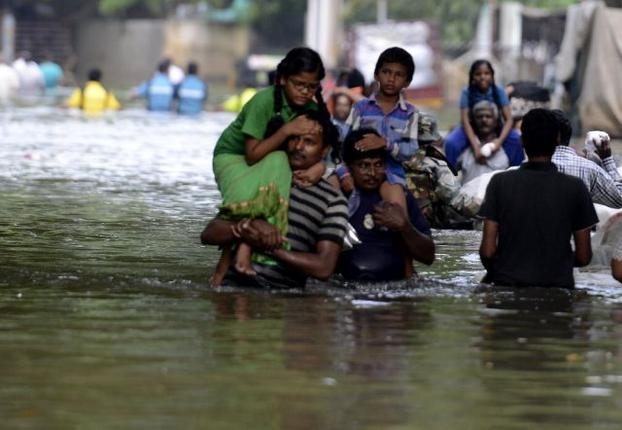
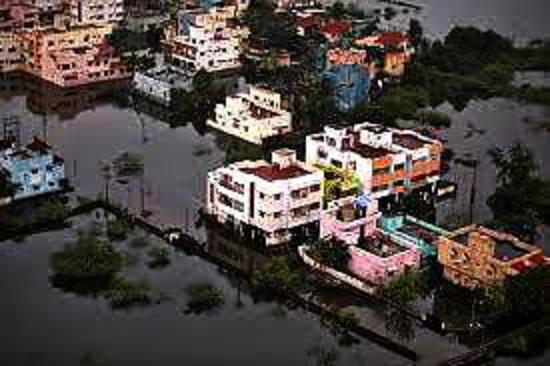
While climate change can increase the probability of such extreme events happening, can this be the real culprit?
Hazards turn into disasters when planners violate man-made and natural laws. We have failed to monitor the urban ecosystem vitals seriously, nor have we taken precautions to ensure that the lifelines do not collapse. The reality in both Mumbai and Chennai, as well as other booming cities, is that the storm water and sewage systems have a very small capacity. The drainage system is old, poorly managed, and clogged with garbage at several places. The storm water system of Mumbai, for instance, has the capacity to carry only 25 mm of rainwater per hour (1). In Chennai, construction-blocked storm water channels reduce the capacity of the reservoirs to soak up unseasonal rains. Land-constrained cities are encroaching on drainage areas such as the mouths of rivers and canals, blocking effective drainage. Zoning regulations were weak or neglected in both the cities due to different political and socioeconomic factors. People have suffered because of a lack of adequate warning mechanisms.
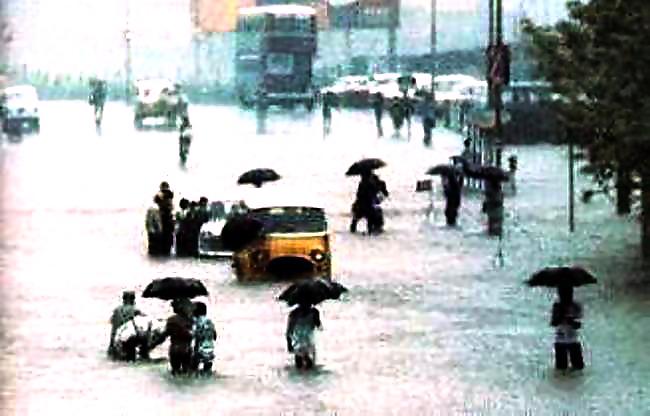
Though the projects require environmental impact assessments in theory, in practice, these are often inoperative. The marshes and swamps are replaced to make way for construction. Mangroves, which provide protection from storms, are destroyed. People have placed construction close to riparian areas. It is well known that riparian areas reduce floods and concrete structures nearby reduce their infiltration abilities (2). The root systems of living natural vegetation in riparian areas open pores in the soil, intercepting runoff and acting as a potential barrier against moving water. By expanding desultorily, we have disturbed a delicate ecological balance, thereby denying the chance of peaceful co-existence of mankind with nature.
Floods are not a new phenomenon to India, nor are they a concern for developing countries alone. Between 1995 and 2015, more than 3,000 flood disasters affected almost 2.3 billion people worldwide, per the UN’s report on “The Human Cost of Weather Related Disasters (3). India, with approximately 900 cities characterized by high density of population and economic activity, is highly vulnerable to climate-meteorological disasters.
While one cannot fight with the forces of nature, one can take adequate steps to improve resilience and minimize the damage caused by these natural disasters. Such steps have their foundation in well-conceived and consistently implemented urban planning and regulations.
Clearly, the deluge in India is not only due to natural forces and the extent of damage could have been minimized with proper urban planning. We will have to pay for past mistakes and, in the immediate future, we may have to face the brunt of nature’s increasing fury. Climate change, can intensify the frequency and intensity of such extreme events happening and we need to prepare for this. What options do we have?
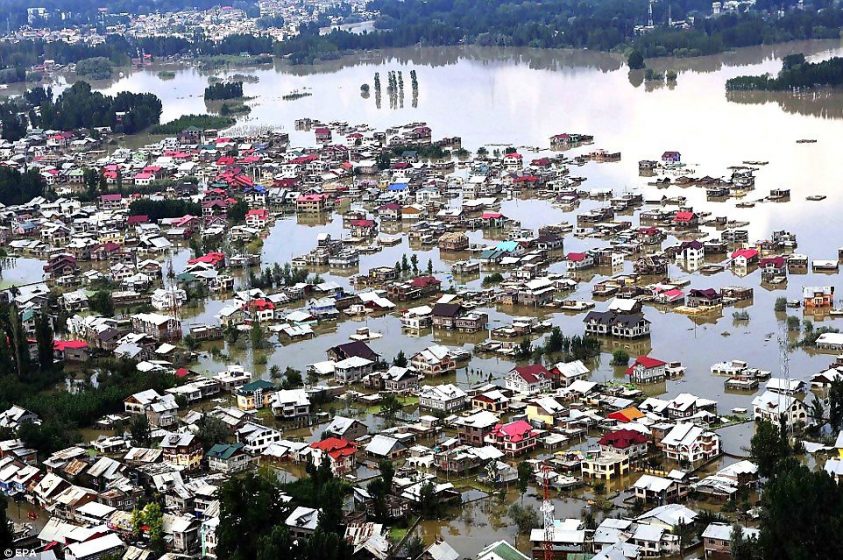
The options we have are to provide (1) resistance, (2) resilience, and (3) remediation. Resistance means preventing the floods or minimizing the damage. This may include new flood gates, flood proofing, flood resistant designs, and using materials which absorb flood related stresses. Resilience means developing the ability of the system to cope with the disaster, both structurally and functionally. Resilience is related to the frequency of the disasters—if cities are resilient, they recover from disasters, else they collapse. Resilience can be improved through strong infrastructure (drainage infrastructure and waste management, for example) and good governance (better weather predictions, advance flood warning systems, awareness campaigns). Remediation means adapting to vagaries and repairing damages after disasters have occurred.
We need to learn from the mistakes of our past and pay adequate attention to investments in natural infrastructure to maximise our resilience to floods. So what are our options?
- Nature-based systems have multiple benefits, unlike so-called gray investments, which are highly specific.
- Wetlands, floods plains, marshes, swamps, riparian lands need to be maintained and vegetation cover has to be restored on these lands
- Pavements need to be permeable
- Mangroves provide natural defense to floods cost effectively than gray infrastructure like dykes and and need to be conserved
- The basic vitals of the cities (pressure points like the carrying capacity of the storm water systems, ability of the cities to drain water, losses in vegetation, demographic growth and the preparedness to extreme events) must be monitored regularly and appropriate actions taken so that city dwellers are not susceptible to the vagaries of nature.
- Rather than emphasising on gray infrastructures alone, nature and nature-based solutions should be integrated with engineering solutions to provide multiple lines of defense.
- Studies highlighting the costs and benefits offered by natural alternatives need to be undertaken.
- Several successful examples of investments in natural infrastructure across the world exist, and they show how cost effective they can be. During the Mumbai floods in 2005, the loss of life and damage could have been much higher but for the 104-sq. km. Sanjay Gandhi National Park, which lies entirely within the city limits.
- Corporations should realise the value of and make investments in infrastructure as part of their social responsibility.
- It is time to identify flood areas, estimate how many people are at risk, regulate the areas vulnerable to floods, build green infrastructure, and provide good basic flood information and early warnings.
- As the threat of climate change looms large, a coordinated approach across multiple stakeholders and proactive natural infrastructure strategies and policies is the need of the day. India may require an exclusive Flood Control Act.
Haripriya Gundimeda
Bombay
On The Nature of Cities
References
- Fact finding committee on Mumbai floods, Final Report, Volume 1, March 2006,
- www.mass.gov/eea/docs/dfg/der/riverways/riparian-factsheet-1.pdf
- Human Costs of Weather Related Disasters, UNISDR (2015)
- http://www.ndma.gov.in/images/guidelines/management_urban_flooding.pdf


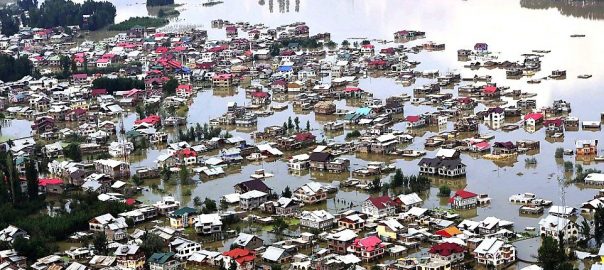
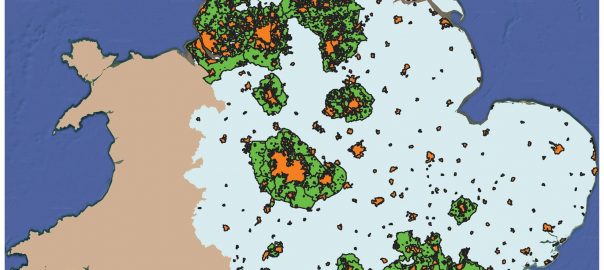

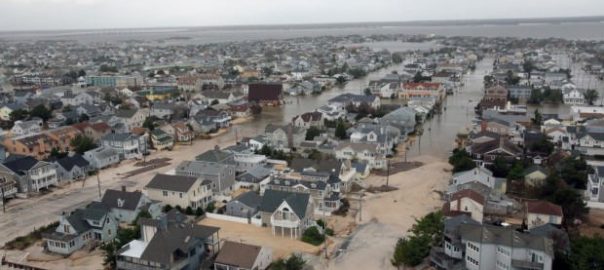

Leave a Reply